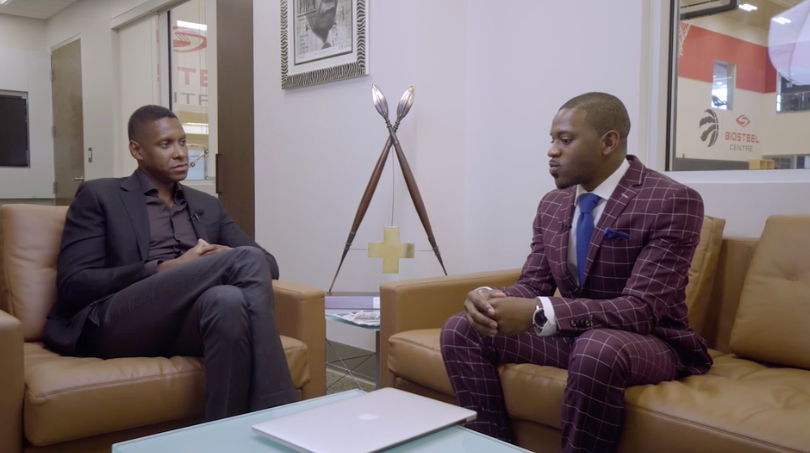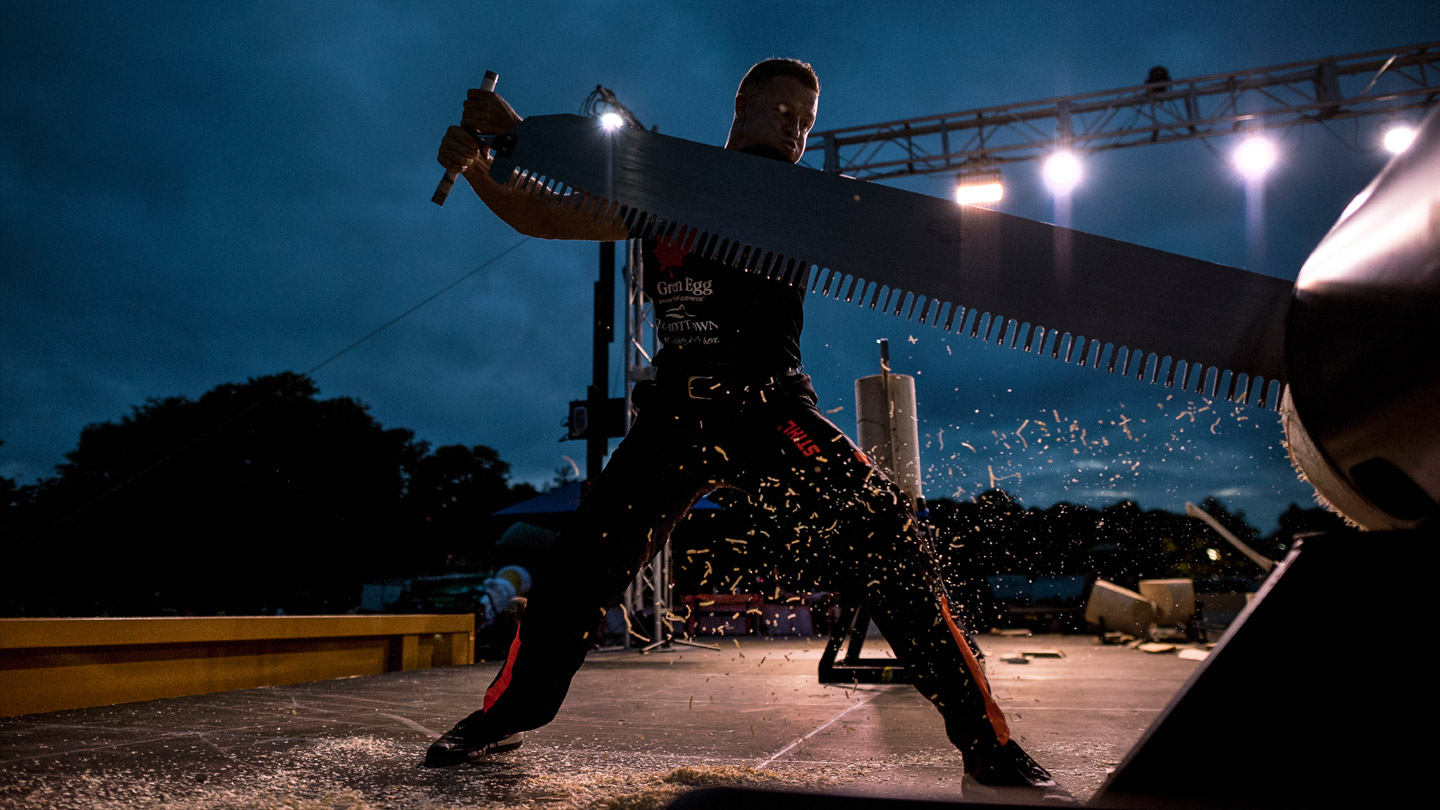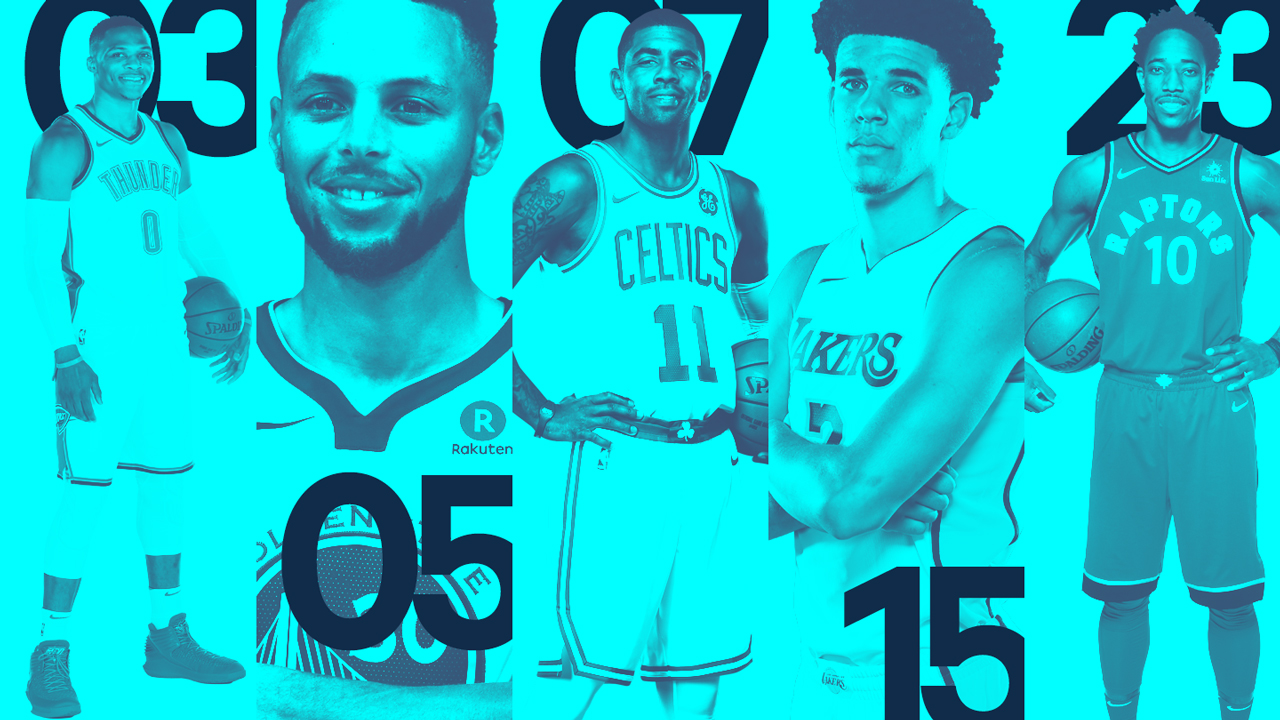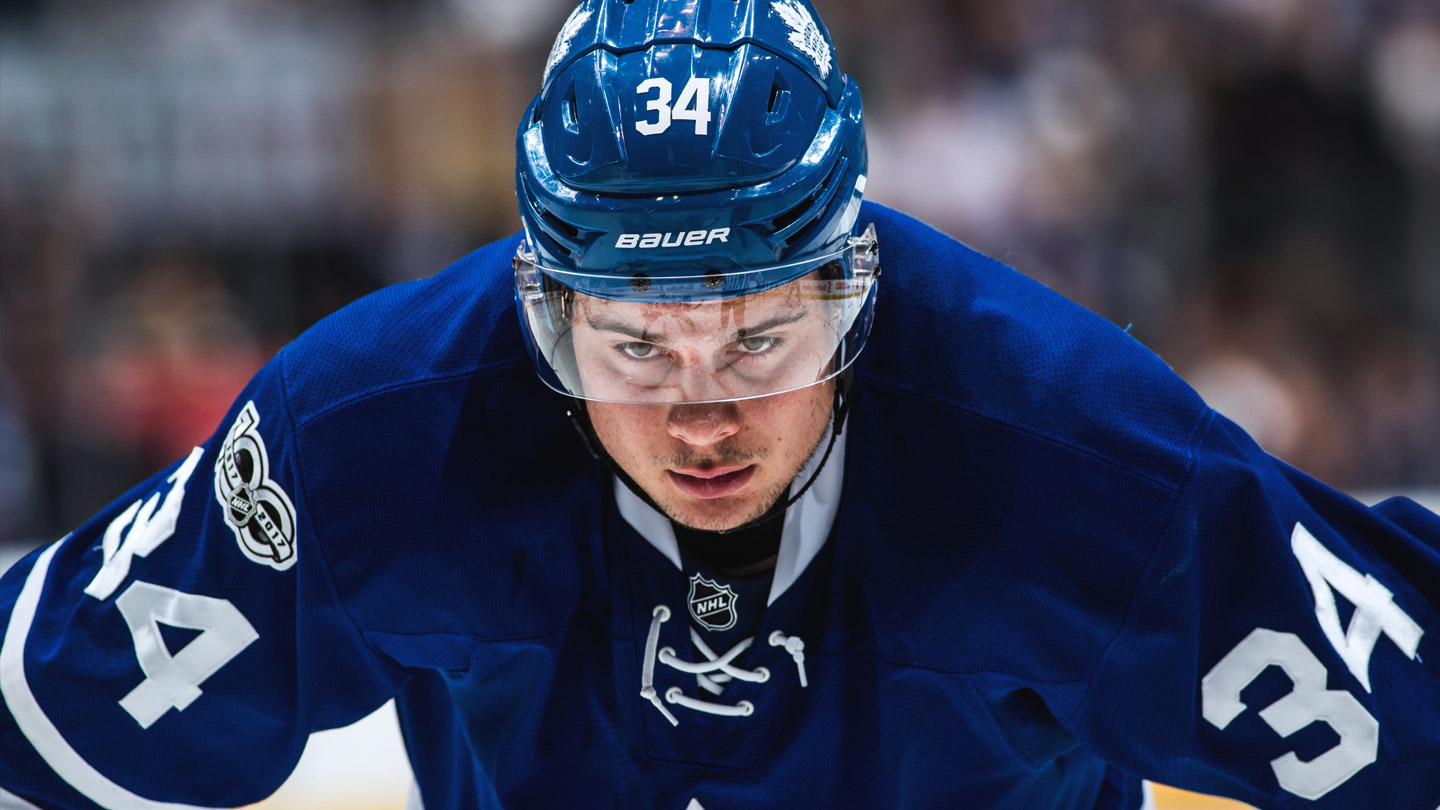The end of most Toronto Raptors practices involves a familiar ritual: the players pairing off and heading to one of six baskets available at BioSteel Centre and putting up shots from various spots around the three-point arc, typically with team staff on hand to help rebound, track makes and misses and offer wisdom. It’s a scene that plays out across the NBA. Getting shots up is like breathing for NBA players — or, at least, the ones that last in a league that has only 450 jobs available for the planet’s best. It’s not just in groups after practice, either, the work gets put in at all hours, alone or with a coach. Third-year wing Norman Powell is famous for coming in early and doing his extra work before most of his teammates have had a coffee. DeMar DeRozan often comes back late at night, enjoying the solitude, lost in the meditative trance of figuring out how to get the ball in the basket.
It all makes sense; making shots makes the world go ’round in the NBA. And increasingly, it’s three-pointers that are commanding the focus as teams accept the blend of analytical evidence and common sense that emphasizes the value of shots worth an extra point. In the past decade, total attempts from beyond the arc have exploded, jumping nearly 50 per cent. To keep pace as the NBA becomes more and more of a shooter’s league, players have to put in that work. “It’s like any other motor skill, man, you gotta do it, right?” says Raptors assistant coach Nick Nurse, gesturing to the practice court. “And this is a bare minimum. Everyone’s got to shoot 100. Guys who are [known as] shooters are shooting more, maybe 200 or 300.”
But it’s hard not to wonder if the entire exercise has been a sweaty investment with diminishing returns; the equivalent of what cud-chewing baseball players call “eyewash” — going through the expected motions (shagging flies in batting practice, for example) despite the fact that they have zero effect on either their team’s performance or their own.
Something to consider: For all those extra shots taken, all those drills done and all the dutiful record keeping, three-point shooting across the league as a whole hasn’t improved in any meaningful way in more than 20 years. In 1997-98 — the first season after the league’s three-year flirtation with making the arc a uniform 22 feet — NBA players knocked down 34.6 per cent of their threes. You might think that the recent massive uptick in three-point attempts was at least in part a result of teams making more of those shots than ever before, but you’d be wrong. Last season, teams knocked down 35.8 per cent of their three balls —just 14 more makes per 1,000 attempts than the league managed the year after Michael Jordan’s second three-peat, and the success rate hasn’t varied significantly since with the range between the league’s high point (36.7 per cent in 2008-09) and the modern low (33.9 per cent in 1998-99) amounting to just 28 makes per 1,000.
The Raptors are no exception. In Dwane Casey’s six seasons as head coach, the team has shot as low as 34 per cent (in 2011-12) and as high as 37.2 per cent (2013-14). Last season they hit 36.3 per cent of their shots from behind the arc, sliding in just above the league average.
But this year things are going to be different.
The phrase “culture reset” has been bandied about over the past six months. It was the sound bite team president Masai Ujiri delivered as he pledged that things would change in Raptorland after his team’s traditional offensive approach — give the ball to DeRozan or Kyle Lowry and get out of the way — was once again stymied in the post-season. This year, isolation basketball is out; ball movement is in. All those tough, leaning, contested twos that have been DeRozan’s bread-and-butter as the team’s go-to scorer? Save them for broken plays and the end of the shot-clock. In the meantime, the “reset” distilled to its simplest form looks like this: More threes please.
So the end-of-practice shooting ritual has taken on an added urgency. “We’re just trying get a process of how we’re tracking progress in hopes of building confidence and a bigger picture of what’s going on,” says Nurse, who Casey has charged with revamping the team’s offensive approach. “We’ve always worked really hard at [our shooting]. But now we’re more organized with it and making it a little more accountable, getting some historical data and seeing what we can learn.”
And with the aim of improving their aim, the club has looked for answers where we all hope to find them in the digital age: technology.
Want to improve your three-point shooting in the hyper-competitive world of professional basketball?
Yup, there’s an app for that.
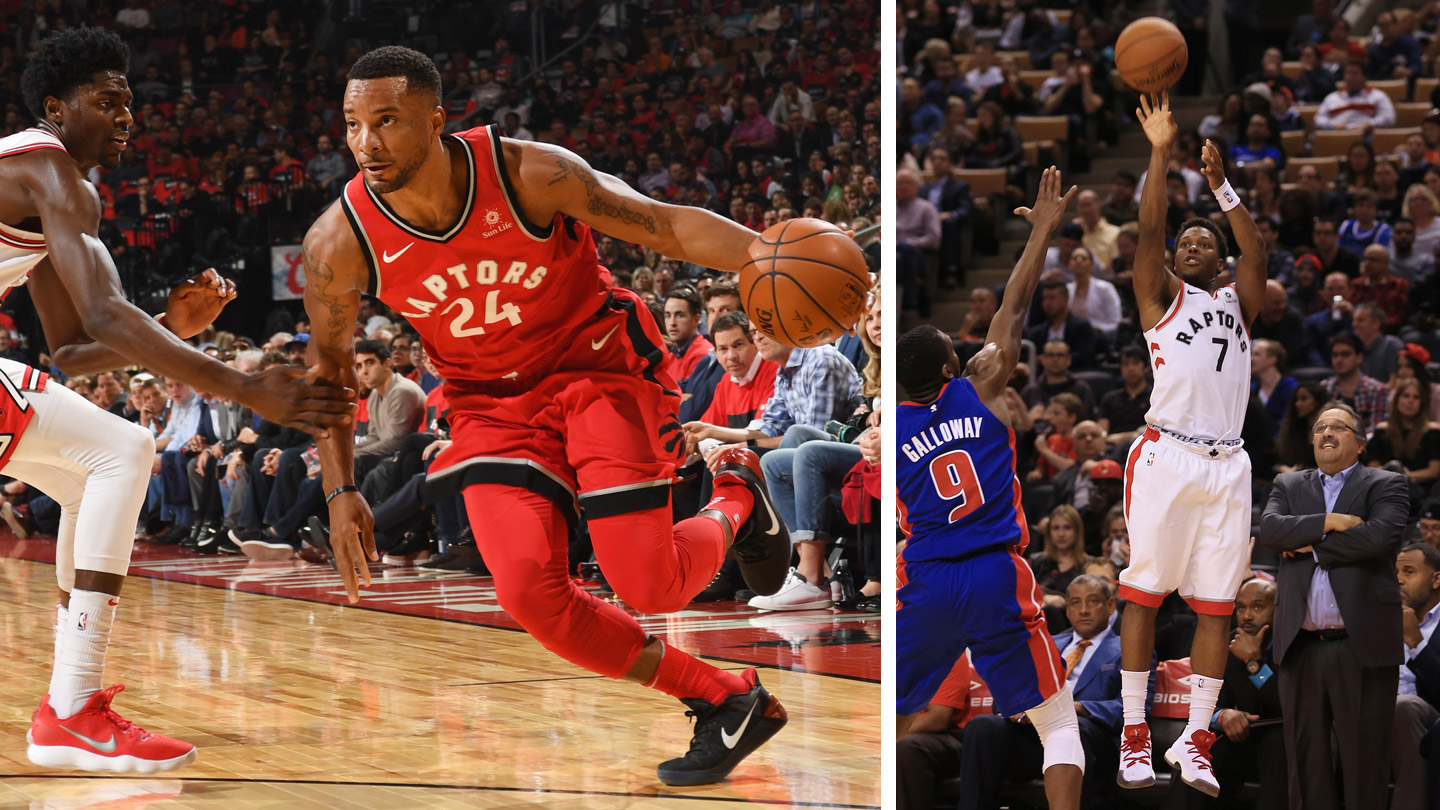
John Carter knows himself well. “I’m an engineer, tech nerd and basketball nut — it all added up to doing crazy stuff like this,” he says with a soft Southern accent, speaking over the phone from his office in Athens, Alabama.
The “crazy stuff” in this case began with the venture capitalist reading about a former physics professor in Silicon Valley trying to figure out how to teach his daughter to properly shoot a basketball via machine learning technology. Carter decided he simply had to get involved. He invested in the business before there was even a commercial product and thus was born Noah Basketball and its primary product Noalytics, which Carter firmly believes is the perfect technology for modern basketball, a training innovation that will do for the three-point revolution what the iPod did for digital music. “It improves shooting. It absolutely improves shooting,” says Carter. “Our motto is ‘Make more shots, win more games.’ That’s really what this is all about.”

Carter’s company offers teams the ability to collect data on every shot taken by every one of their players in practices and scrimmages The flight of each attempt is tracked and that information is fed into a database — 26 million shots and growing — that allows Noah to provide instant feedback for shooters and their teams with a previously unheard of level of detail. “People have been tracking shooting forever,” says Carter. “You can hire an intern to do it and they can tell you that you shot 60 out of 100 threes, but what they don’t know is how [those failed attempts] missed.
“That’s where we’re different. We know if it was three inches to the left and short. We know if it was right and long. We can see tendencies that the naked eye can’t see … We just have data no one in the world has ever seen before.”
As with many tech-based solutions to long-standing problems, the beauty is in the apparent simplicity, even if the underlying engineering is a bit mind-bendy. The nerve centre of the system is a 3D sensor installed 13 feet directly above the rim which collects rapid-fire images of every shot taken — where it originated from, its arc (hence the name Noah) and the line it took to the basket. There is a shell containing a hard drive, network equipment and a speaker mounted on the wall behind each basket
The speaker component is perhaps the most jarring, as a disembodied digital voice breaks down the quality of the user’s shots, one by one. Set it to evaluate arc and you get an instant report on the angle the ball descends en route to the basket. Shoot it high so it comes down steeply? “49,” says the computer. Shoot a low line drive? “40,” the computer announces. It’s like having your workout evaluated by the voice on Google Maps. There is also a tablet where data can be tagged and reviewed, and yes, there is an app that allows players to inspect their results remotely on their phones.
By analyzing all the data, Carter’s team has narrowed the critical elements of successful shooting to three areas. Without fail, Carter says, the best shooters start their ball on-line with minimal variance left or right; their shots follow an arc that sees the ball consistently enter the basket at a 45-degree angle (give or take a couple of degrees) and the midpoint of the ball passes through the 18-inch wide hoop 11 inches past the front rim.
All that data has helped Carter overturn a couple of long-held truisms.
Contrary to popular wisdom the most successful shot isn’t a splashy swish dead centre, but something Carter calls a “back rim and down” or BRAD — where the top half of the ball grazes the back of the hoop before snapping through the mesh. “If the top half the ball hits the rim, it’s going to score, every time,” says Carter. “But there is a lot of thinking out there that is absolutely wrong — that you want to train to swish the shot. If you’re training yourself to swish every shot, you’re training yourself to miss short, we’ve proven that.”
What else have they proven?
“One of the biggest shocks to the entire industry is shooting it too high [with an arc well above 45 degrees] is just as bad as shooting it flat,” Carter says. “We’ve all been taught to shoot it higher [but] the data doesn’t support [that approach]. If you shoot too high, you will spray it short [or] long; you just can’t control it. Even at the NBA level you have coaches that still believe you can never shoot it too high, and I’ve had to prove these guys wrong and it can be a difficult conversation sometimes.”

Noah’s entrée into the NBA orbit came when they won the startup competition for their category at the Sloan Sports Analytics Conference, the MIT-sponsored gathering of the sports industry’s best and brightest. The Sloan bump has seen them take on nearly half of the NBA’s 30 franchises as clients. Their ultimate goal is to penetrate the market of 26,000 high schools in the sports-mad U.S. as well as the training academy and private club markets. A full-court installation costs $4,800 but the real opportunity for the business lies in the $100/month data plan the systems require.
The Raptors are one of Noah’s most recent installations, an acquisition so new club officials politely declined to comment for this story because they haven’t been able to evaluate it yet. But you don’t need an exhaustive understanding of Noah’s proprietary algorithms to appreciate why a team like Toronto would take the plunge. Four teams made at least 12 triples a game last season: Golden State, Houston, Boston and Cleveland — three of four conference finalists, both Finals teams, and, in Houston, the second-winningest team in the regular season. As three-point shooting has become increasingly vital to winning, the Raptors, who were 21st in the league with just 8.8 made threes a game in 2016-17, have to keep up or risk being left behind. “Adapt or die,” as Casey is prone to saying.
And they’ve adapted. In the pre-season Toronto averaged 43 three-point attempts a game – second in the NBA and a nearly 80-per cent increase from the 24.3 they put up last season, which was 22nd in the league.
Those extreme early numbers are the result of an exercise in pushing the envelope to get more comfortable with letting threes fly — the Raptors’ goal for the season is in the range of 30 or 35 threes per night, which should land them in the league’s top 10. So far, so good: On opening night against the Chicago Bulls they knocked down 13 threes on 29 attempts, which would have ranked as one of their best and most prolific performances from deep last season.
Players love that green light, but there is one problem with the attempt-heavy approach: the Raptors’ three-point shooting depth is sparse. Lowry is elite, one of just three players to make at least three triples a game and shoot better than 40 per cent last season (the other two were Splash Brothers Steph Curry and Klay Thompson of Golden State). Newcomer C.J. Miles was ranked second in the NBA last year both in percentage (50.8) and makes (66) from the coveted corner three spot, and Serge Ibaka was the only player in the NBA to combine more than 100 threes and 100 blocked shots (124 in both cases) while shooting better than 37 per cent from deep (39.8). But after those three it’s slim pickings – Toronto doesn’t have single player on its roster who has averaged one made three per game, which may explain why the Raptors shot just 32 per cent on all those pre-season looks.
It’s reasonable to argue that the Raptors’ short-term success will be tied to how quickly their players with little track record for shooting from distance become at least passable threats. In other words, Toronto’s ambitions this season hinge on its ability as team to buck 20 years of NBA history. They need to find a way to become better than average.
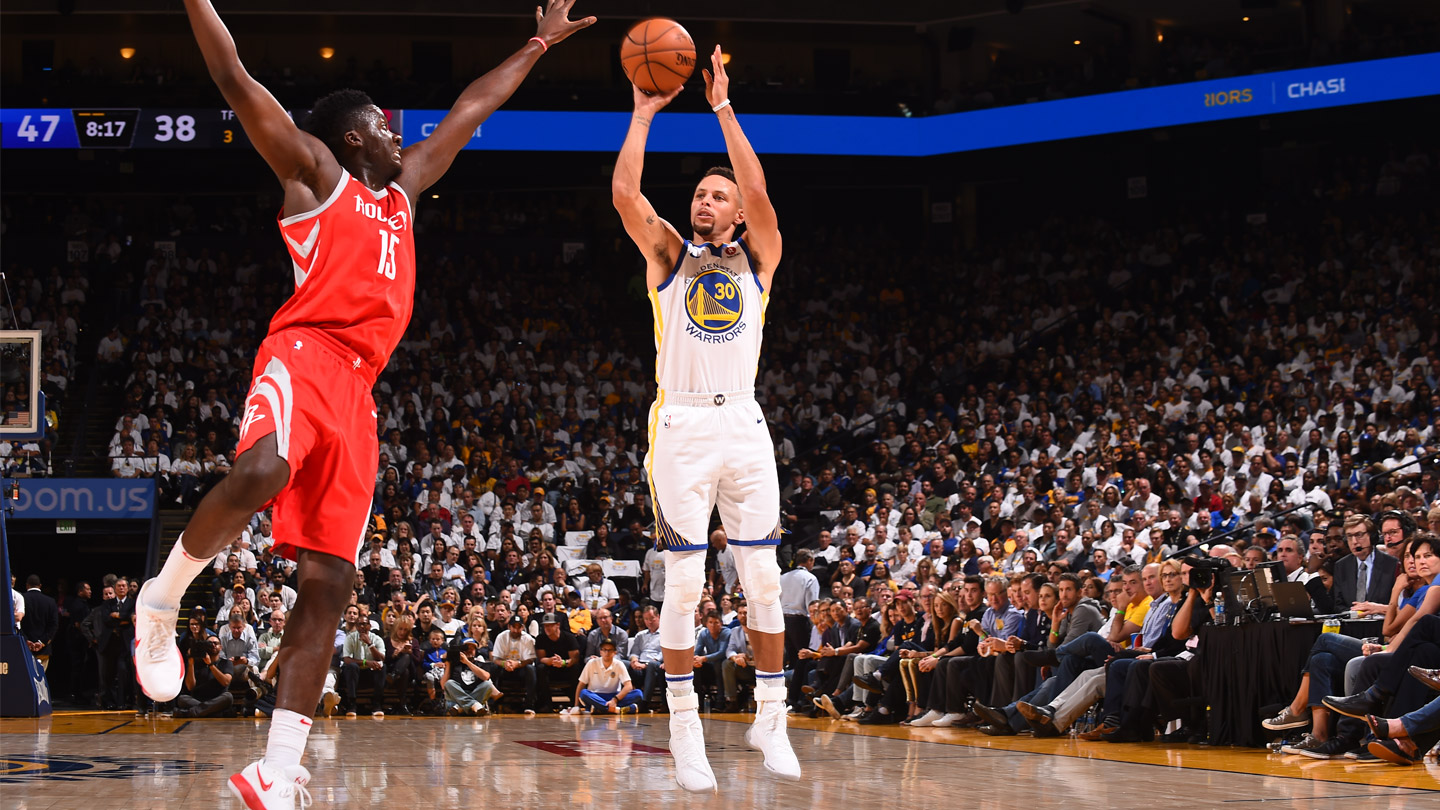
Fortunately for the Raptors, they have an example of what is possible walking in their midst, chatting easily and sharing the wisdom of 12 NBA seasons. Miles was one of the last players drafted straight out of high school before the league legislated the One-and-Done Era into existence. He seems none the worse for wear for having come into the NBA as an 18-year-old from Skyline High School in Dallas, and the secret of his success could be that he was wise enough to recognize his place in the league was as a role player and that shooting from deep was the role that best suited him.
That wouldn’t have seemed obvious at first. Miles shot just 21.9 per cent from three in his second NBA season, the first year he got something close to steady playing time. He showed signs of gradual improvement, but even by Year 7 he was still clocking in at 30 per cent — well below league average. But by the time he reached the Cleveland Cavaliers in 2012, then head coach Mike Brown convinced Miles that shooting was going to be his ticket to longevity, and he offered some advice: Work on it harder.
The results of that effort will keep the 30-year-old — who signed a three-year, $25-million contract this off-season — employed for years to come. He jumped to a very respectable 38.4 per cent in Year 8 and by last season had arrived as one of the NBA’s truly elite marksmen — the only player to make more than his 169 threes off the bench was Houston’s Eric Gordon, who was named the league’s Sixth Man of Year.
So, who better to ask whether shooters are born or made?
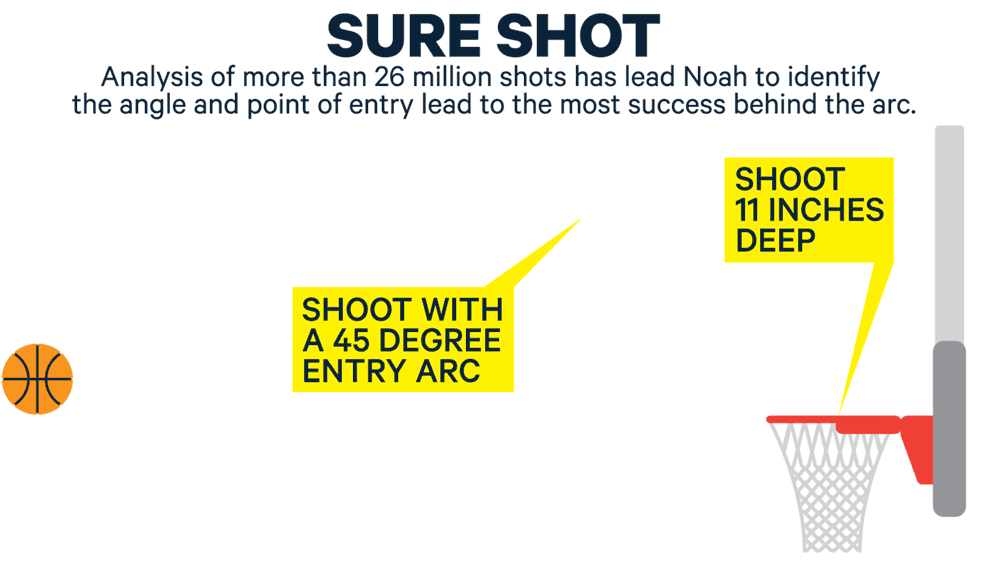
“There are definitely certain parts of athleticism or coordination that you are definitely born with,” says Miles. “You take a guy like Steph Curry, there are some things he has naturally that allow him to become the shooter he is. He had to work at it, but he’s got some natural things that allow him to turn it into an elite thing.
“But you can teach someone to be consistent enough to not be left open. It just takes time, effort and focus, like anything else. Ten-thousand hours, right?”
The Raptors don’t have 10,000 hours is the problem — they would have to practice shooting two hours a day for nearly 14 years and the playoffs start in April. No wonder the club is putting more time and energy into improving three-point shooting throughout their roster, and was willing to invest in Noahlytics.
For his part, Carter is convinced that his system can help, though he also acknowledges that the biggest impact his product can have is at the high school and collegiate levels. The majority of NBA players, his findings show, already shoot reasonably close to optimally.
But then again, the stakes are so much higher in a league where a third of all games played are decided by six points or less. “At the highest level of the game, there is less upside, but a few percentage points here or there at the free-throw line and an extra made three or two and suddenly you’ve won an extra five games on the season,” says Carter.
Ultimately the battle to improve three-point shooting likely comes down to the fight against human nature rather than applied physics. Dave Hopla is a shooting coach who has worked for several NBA clubs, including two seasons with the Raptors — one of which was the 2007-08 campaign, when the team shot a franchise record 39.2 per cent from deep, second in the NBA that year. “Guys have to want to put in the time, and they have to believe it’s important that they get better at this,” says Hopla, who can routinely go through a 500-shot workout without a miss. “You want be a great shooter? I always say: Shoot it correctly and shoot it more than anyone else. But that’s when the excuses come in. ‘I can’t shoot today because Kim Kardashian is having a new plastic surgery.’ ‘There’s low cloud cover in Brazil.’ There’s all kinds of excuses instead of making it a priority.”
Hopla is huge believer in tracking results and offering objective feedback. He’s logged every shot he’s taken in workouts for more than 40 years. As a coach, he delivered reports on every shot his players took in every game. In that sense, he’s a believer in the potential Noahlytics offers. As a shooting coach with another NBA team who is using the system put it: “It’s a great way for me to check if my perceptions are accurate, and it’s a visual representation of improvement for the player. It’s a sales tool more than anything else.”
Noahlytics is too new in Toronto for many players to have formed definite opinions, but there is curiosity around the system’s ability to give feedback on a shot-by-shot basis in real time. “I’ve tried it,” says Norm Powell, whose draft stock fell in part because he shot only 31 per cent from behind the shorter college line. “I like it more when it tells you when you’re going left of right than when it tells you how high you’re shooting the ball. I can’t really tell how to adjust yet, but the “minus-1 to the right, minus-2 to the left” helps you line up, and then it’s more your release point and follow through — making sure it’s coming off your fingers the same way. I’m looking forward to learning more about it and having time to use it.”
Says second-year centre Jakob Poeltl, who is trying to expand his shooting range: “At first it threw me off a little, because it was talking to me while I was shooting, but it’s good to check yourself really … I feel like once there’s a certain amount of data, I can look over it and see what kind of adjustments I need to make.”
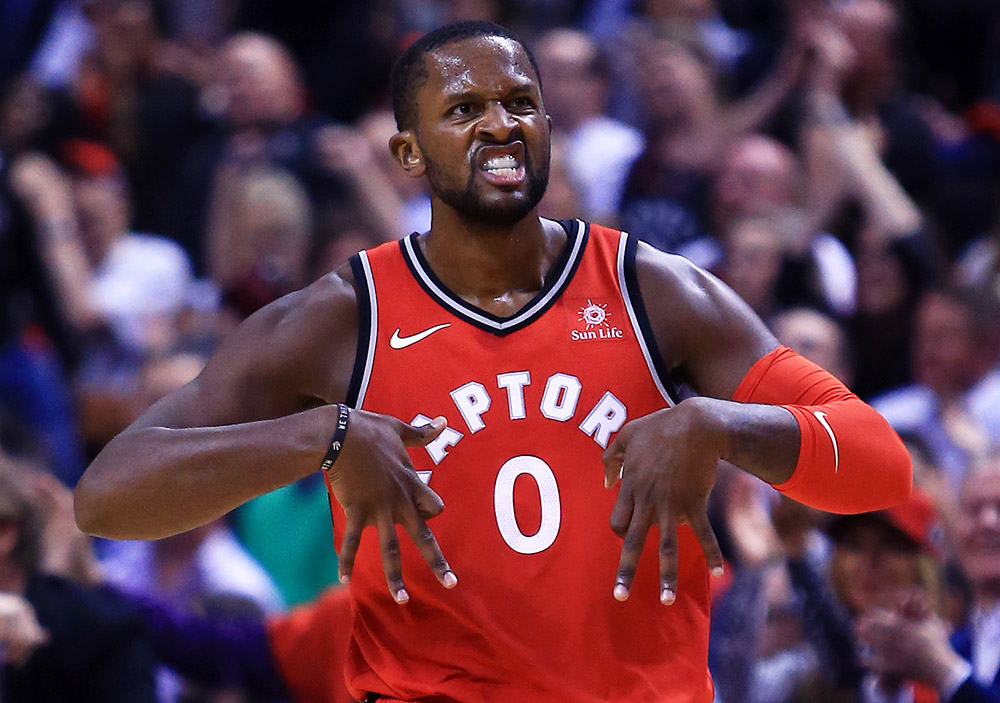
However, habits are hard to break. DeRozan’s primary deficiency as offensive player is his three-point shooting. He’s converted just 28.6 per cent from deep for his career and, given that he’s led Toronto in overall field-goal attempts for six straight seasons, his ability to nudge up his three-point shooting even marginally could have a significant impact. But DeRozan is by nature a skeptic and a purist, so it’s not all that surprising he’s not yet sold on the computer voice and data points. “I don’t use it,” he says. “I’d get tired of hearing that shit. I’m trying to concentrate on working out, not hearing that thing. I don’t even know how it works, honestly. Basketball is always a feel, a rhythm, for me.
“I just play how you know and play with that passion. That passion will lead your will to push you to anything that needs to be done.”
Sticking to what he knows has worked out pretty well for DeRozan so far, his three-point shooting aside. And Miles — already one of the best three-point shooters in the sport — is also confident that a career’s worth of lessons are all he needs to keep his perimeter game at his high standard.
Does he see dates with Noah in his future? Not yet, anyway. “For me, because I’ve been shooting it from range for so long, I can just feel it. I can shoot it three times and I can tell if it’s flat or whatever.”
But he’ll be keeping track of his club’s new tracking system, the possibility of making more threes is too alluring to ignore: “If it can make me better? I’m using it,” Miles says. “If it can take me from 42 to 48? Then I’m using it.”

